Best camera phones in 2024
We've tested all the best camera phones — these are the ones that rise to the top
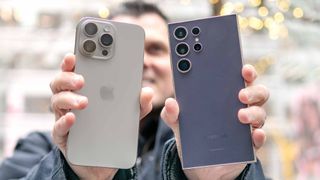
1. The list in brief
2. The best overall
3. The best Android camera phone
4. Best Google camera phone
5. Best camera phone under $500
6. Best iPhone value
7. Most improved camera phone
8. Best Samsung value
9. Best iPhone Pro camera for less
10. Best foldable camera phone
11. How to pick
12. How we test camera phones
There's more to the phones on this best camera phones list than just their sensor and megapixel count. These devices blend great hardware, software and a little AI magic to create amazing photos that you'll be happy to share immediately. And we test them all thoroughly to see who does it best.
Our current top pick is the iPhone 15 Pro Max, which just beats out the Galaxy S24 Ultra in our 200-photo camera face-off. (For more on the changes Apple made to the cameras on the best iPhone, look at our 200-photo iPhone 15 Pro vs. iPhone 14 Pro Max face-off.) For a less expensive option, try the Google Pixel 8a, which costs a little less than $500 while still taking premium photos. (Our Pixel 8a vs. Nothing Phone 2a camera face-off shows how Google's phone compares to another low-cost option.)
After hundreds of hours of testing each camera in light, dark and other scenarios, and after many head-to-head photo comparisons between similar devices, these are the best camera phones you can buy right now.
Recent updates
The arrival of the Galaxy Z Fold 6 and Galaxy Z Flip 6 could mean one — or both — of Samsung's new foldables cracks our list of the best camera phones. The Galaxy Z Fold 6 has the same camera setup as the Galaxy Z Fold 5, a current entry on our list. And as we saw in our Galaxy Z Flip 6 hands on, the new flip phone has a dramatically improved main camera. Stay tuned for addition testing, and check out our Galaxy Z Fold 6 hands-on for more initial impressions.
The quick list
Here's a summary of the best camera phones you can buy right now based on our head-to-head testing of each phone's camera capabilities. Keep scrolling to find the in-depth reviews of every camera phone featured here.
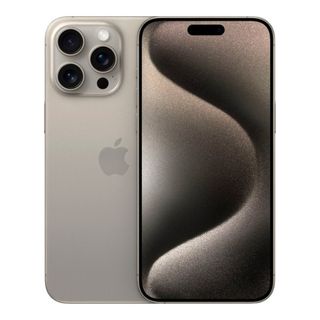
Come for the improved telephoto lens on the iPhone 15 Pro Max — it can deliver a 5x zoom now — but stay for the software improvements that bolster Smart HDR, portrait mode and night photos. A titanium frame makes this camera phone easier to tote around.
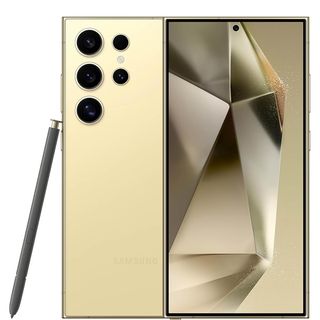
On the Android side of things, the Samsung Galaxy S24 Ultra should be your camera of choice, and it even matches up well against the iPhone 15 Pro Max in head-to-head comparisons. AI-powered photo editing tools add to the S24 Ultra’s value.
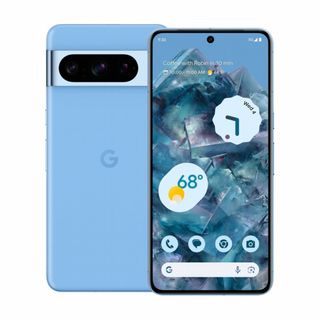
The Pixel 8 Pro ups the ante when it comes to capturing photos and video. Its Tensor G2 chipset adds even more magical features like Magic Editor and Audio Magic Eraser to turn its wielder into a seasoned photo and video editor. If that's not enough, it's a showcase for the future of artificial intelligence.
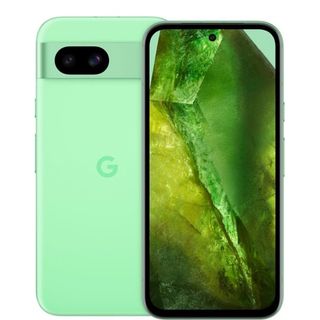
Google continues to prove you don't need to spend big bucks for a great camera phone, as its latest sub-$500 device, the Pixel 8a matches up well with any other entry on this list. The phone also offers AI-powered editing tools similar to what you get on the Pixel 8 flagships.
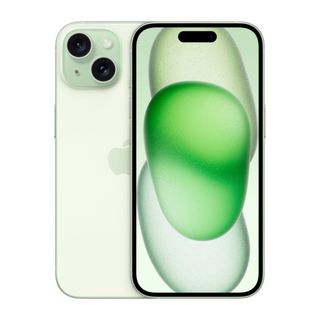
Apple upgraded the main camera on its entry-level iPhone to a 48MP sensor, which not only means more detailed shots but the ability to take a sharp 2x zoom without a dedicated telephoto lens. Software improvements also enhance portrait and night shots.
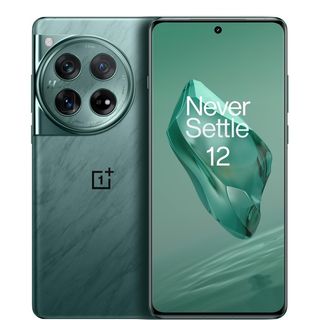
Credit OnePlus for working hard over the years to improve camera performance, an effort that culminates in the OnePlus 12. Besides high-quality images from its main lens, the OnePlus 12 offers an improved telephoto camera with a much better 3x optical zoom than previous OnePlus flagships.
Load the next 3 products...
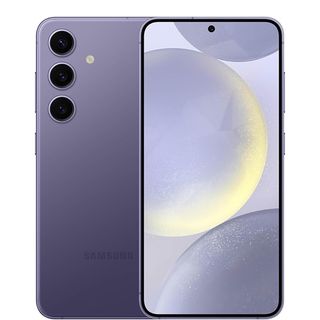
The Galaxy S24 puts a flagship camera phone in your hands for $500 less than the S24 Ultra. You'll get bright, colorful photos, along with the Galaxy AI-powered photo editing tools of Samsung's more expensive S24 models.
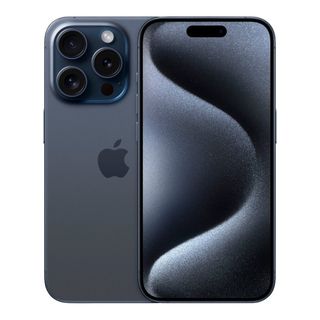
It may not have the iPhone 15 Pro Max's more powerful zoom lens, but there's plenty for photo fans to like about the iPhone 15 Pro, including the larger sensor on the 48MP main camera. That improves low light photos, and software improvements make sure that portraits are stellar.
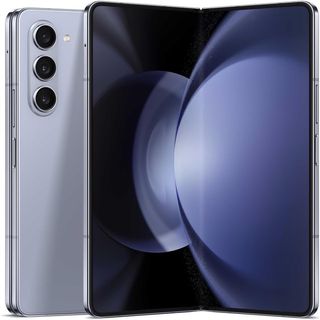
The Galaxy Z Fold 5 re-establishes Samsung as the top maker of foldable phones, and the cameras on this device are a big reason why. You get bright, vibrant images from the Fold when compared to the output from rival foldable handsets.

I'm the managing editor for mobile at Tom's Guide, and I've been covering technology since 1999. The launch of the original iPhone in 2007 meant I started covering phones. I joined Tom's Guide in 2015, and in that time, I've developed an expertise with Android phones, as you can see by the stack of Samsung, Google and Motorola device in my house. Go through my photo library, and you'll find plenty of images shot by a variety of phones in the name of the head-to-head testing we do to pick the best camera phones.
The best camera phones you can buy today
Why you can trust Tom's Guide
The best overall






Specifications
Reasons to buy
Reasons to avoid
The improved zoom lens on the iPhone 15 Pro Max draws all the attention, but it's not the only boost Apple gave to the photo features on its premium phone. Smart HDR gets an update that improves dynamic range while portrait and nights shots see some software-powered improvements as well. It's no wonder that the iPhone 15 Pro Max excels at both portrait shots and low-light photos in a way that tops what Samsung's best camera phone can do.
As for that improved zoom lens, the tetraprism design lets the iPhone 15 Pro Max deliver a 5x zoom, compared to a 3x zoom on the iPhone 15 Pro. The Galaxy S24 Ultra now features a 5x telephoto lens, too, though it uses cropping and a high-resolution sensor to go up to a 10x zoom if need be.
Even if the S24 Ultra can zoom a littler farther, there's a lot to like about the iPhone 15 Pro Max's cameras, from the anti-reflecting coating on the ultrawide lens to the outstanding quality of video capture. iPhone users who want the best camera phone should be prepared to pay up for this model. What's more the iPhone 15 Pro Max is one of two current iPhones with the horsepower to support Apple Intelligence, so you'll have access to AI-powered photo features like Clean Up when Apple releases those tools later this year.
Read our full iPhone 15 Pro Max review.
The best Android camera phone






Specifications
Reasons to buy
Reasons to avoid
If you’ve used a Galaxy S Ultra lately, you know exactly the kind of camera performance to expect from the Galaxy S24 Ultra. The camera setup is the same as before by and large, with the exception of larger pixels that are capable of capturing more light. As a result, colors are a bit brighter in images captured by the Galaxy S24 Ultra.
The other big change to this year’s phone involves one of the telephoto lenses, as a a 10MP sensor gives way to a 50MP one. That means more detail in zoom shots, but the new setup also scales back the optical zoom from 10x to 5x. The Galaxy S24 Ultra can still support a 10x zoom by shooting images at full 50MP resolution and then cropping in on an area of detail. It works well, though we’ve spotted some softer areas in the S24 Ultra’s images compared to the Galaxy S23 Ultra. As a result, the S24 Ultra yields one of its traditional edges over the iPhone.
We do like the AI tools Samsung includes for photo-editing, like the ability to resize and move around the subjects of a photo with the help of generative AI. Then again, those features are also available on Samsung’s less expensive S24 models and the One UI 6.1 updated added them to the Galaxy S23 phones as well as Samsung's latest foldables.
For head-to-head looks at how the cameras on the S24 Ultra perform against other Android phones, check out the Galaxy S24 Ultra vs Pixel 8 Pro and Galaxy S24 Ultra vs. OnePlus 12 200-photo face-offs.
Read our full Samsung Galaxy S24 Ultra review.
The best Google camera phone




Specifications
Reasons to buy
Reasons to avoid
Coming in hot right behind the iPhone 15 Pro Max is the Pixel 8 Pro, Google’s latest flagship. This phone improves upon its predecessor in many key ways, while also giving us a glimpse into the future with artificial intelligence powering unique experiences. The Pixel 8 Pro keeps a similar triple camera arrangement, but its Tensor G3 powers cool new features such as Best Take, Magic Editor, and Audio Magic Eraser. A Video Boost feature exclusive to the Pixel 8 Pro is now live, too.
When it comes to capturing photos, this year's model adds Pro Controls for the first time ever in the series — giving users more controls typically found on dedicated mirrorless cameras. This means adjusting common parameters like the ISO, shutter speed, color temperature, and focus.
If that's not enough, the magic of the Pixel 8 Pro is on full display with its various Google AI assisted features. Most notably, we love how Google Assistant sounds more human than ever before when screening phone calls. Not only that, but also the contextual responses that Google Assistant is able to provide when we're unable to take those phone calls.
Google has scheduled a hardware event for August 13, and we're expecting the Pixel 9 and Pixel 9 Pro to debut at that event. Stay tuned to see how those cameras compare to the current Pixel devices.
Read our full Pixel 8 Pro review.
The best low-cost camera phone






Specifications
Reasons to buy
Reasons to avoid
The Google Pixel 8a isn't a big leap forward from the Pixel 7a it replaces as Google's budget-priced phone. The new model uses the same 64MP main camera as its predecessor, and the photo-processing capabilities are at the same high level. While Pixel 7a owners have little reason to upgrade, newcomers looking for a low-cost camera phone will appreciate the high-quality output produced by the Pixel 8a.
The new Tensor G3 chipset powering the Pixel 8a also enables some very impressive photo editing tools already available on the Pixel 8 flagships. You can use Magic Editor to reposition and resize the subjects of your photos, while Best Take can swap in faces to ensure nobody's blinking when you take a group photo.
Best of all, the Pixel 8a does feature improved battery life, long an area where previous Pixel phones have struggled. By besting the average smartphone by 1.5 hours on our battery test, you won't have to worry about losing power when you take the Pixel 8a on an extended photo shoot.
Read our full Google Pixel 8a review.
The best iPhone value






Specifications
Reasons to buy
Reasons to avoid
The iPhone 15 takes a big leap forward by inheriting the 48MP main camera Apple introduced to the iPhone 14 Pro lineup. But that main camera does more than just capture more detailed shots. If you use the default settings, you're getting a 24MP image that balances detail with lighting and color. The main camera also enables you to zoom in by 2x without any noise or blur creeping into the image as a workaround for the lack of a dedicated telephoto lens. (To see how that works in practice, check our our iPhone 15 vs. Galaxy S24 zoom shot comparison.)
The same software improvements available to the iPhone 15 Pro Max are on display here, so you get the better Smart HDR, portrait mode and Night sight features. Best of all, the iPhone 15 starts at $799 — $400 less than the iPhone 15 Pro Max, so you're getting premium camera features for less.
Read our full iPhone 15 review.
Most improved camera phone






Specifications
Reasons to buy
Reasons to avoid
You can’t claim that cameras are a weak area for OnePlus flagships anymore, certainly not after the OnePlus 12 captured images that could stand up well against anything captured by top Samsung and Apple camera phones. Credit goes to the fourth generation Hasselblad camera that OnePlus has included on this year’s phone after once again teaming up with the lens specialist to fine tune its optics.
The biggest change this year is to the telephoto lens, which not only features a 64MP sensor on the OnePlus 12 but also extends its optical zoom capabilities to 3x. The result is sharper, more detailed zoom shots that compare more favorably to other top camera phones.
The OnePlus 12 does occasionally struggle with exposure on low-light images and at launch it lacks some of the AI-powered editing tools you’ll find on the latest Samsung and Google flagships. But along with the Galaxy S24, this is one of the cheaper options when it comes to a flagship phone equipped with a telephoto lens.
Read our full OnePlus 12 review.
The best value Samsung camera phone





Specifications
Reasons to buy
Reasons to avoid
As impressive as the Galaxy S24 Ultra's cameras are, that's a pretty costly phone at $1,299. For $500 less, the Galaxy S24 delivers high-quality photos and the same Galaxy AI photo editing features found on the Ultra. You may not get a 200MP sensor for the main camera, but the S24's 50MP shooter is perfectly capable of capturing detailed, colorful photos. The Galaxy S24 is one of the few phones under $800 that offers a telephoto lens.
Truth be told, Samsung didn't change much with the camera hardware from the Galaxy S23, but the Galaxy S24 does support all the Galaxy AI found on other new Samsung flagships. That includes edit suggestions where the S24 will suggest possible edits to improve your pictures. A generative editing tool lets you resize and move objects or erase them entirely.
Read our full Samsung Galaxy S24 review.
The best Apple camera phone for less






Specifications
Reasons to buy
Reasons to avoid
You won't get the longer 5x zoom that the iPhone 15 Pro Max's redesigned telephoto lens offers when you opt for the iPhone 15 Pro. But you'll also only spend $999 on this phone — $200 less than the Pro Max — and the 3x optical zoom on the iPhone 15 Pro is nothing to sneeze at.
All the other features associated with the iPhone 15 Pro Max are here, from the ability to take portrait shots without having to enter Portrait mode to the Photonic Engine boost that produces sharper looking night photos. Battery life is also better on the compact Pro model, so you can spend more time capturing photos and videos with this phone.
Speaking of videos, Cinematic mode adds support for up to 3x zoom, and we were able to capture smooth, colorful footage in our testing. If money's no object, by all means go for the iPhone 15 Pro Max, but the iPhone 15 Pro is a killer camera phone in its own right. And like the iPhone 15 Pro Max, the Pro model can run Apple Intelligence features, including several photo-facing features.
Read our full iPhone 15 Pro review.
The best foldable camera phone






Specifications
Reasons to buy
Reasons to avoid
The arrival of the Galaxy Z Fold 6 on July 24 means you should probably hold off on turning to the Galaxy Z Fold 5 for a foldable phone with great cameras. We're still testing the latest Galaxy Fold, but it has the same camera setup as the Galaxy Z Fold 5, so you'd imagine camera performance will be similar. (That said, the ultrawide lens on the Z Fold 5 is supposed to perform better in low light.) Also, the Galaxy Z Flip 6 now features a 50MP main camera, compared to a 12MP sensor on the Galaxy Z Flip 5, so both of Samsung's latest foldables could be formidable camera phones.
As for the Galaxy Z Fold 5, it produces bright, vibrant images. Credit the Snapdragon 8 Gen 2 for Galaxy chipset and its photo-processing powers because there are no optical improvements from the Galaxy Z Fold 4. You still get a 50MP main shooter coupled with 12MP ultrawide and 10MP telephoto lenses. The unique folding design lets you use those rear cameras for self portraits too — something we'd recommend over the disappointing 4MP under-display camera.
The Snapdragon 8 Gen 2 silicon also helps the Galaxy Z Fold 5 post the best battery life of any foldable, so you won't have to worry about running out of power as the perfect shot comes along. And a recent software update brings the same Galaxy AI features introduced via the Galaxy S24 release to Samsung's top foldable, though the Galaxy Z Fold 6 enjoys new Galaxy AI features of its own, including ones that turn photos into illustrations.
Read our full Samsung Galaxy Z Fold 5 review.
How to pick the best camera phone
There are many factors to consider if camera quality factors heavily into your smartphone purchasing decision. A good way to start is by asking yourself what kinds of photos you see yourself taking. Not all multi-lens cameras are created equal — some have ultrawide lenses for stunning landscapes, others have telephotos for zoomed-in shallow-depth-of-field portraits, and others still have both. The newest flagships from the likes of Samsung and Huawei even have periscope-style lenses that can achieve up to 10x lossless zoom, rivaling the power of DSLRs.
Something else to consider: Megapixels don’t matter as much as aperture. Cameras with a wider aperture (lower ƒ-stop numbers translate to wider lenses) let in more light, which greatly helps produce better shots in the dark. The high-megapixel sensors found in the latest devices are nice, but it's a common misconception that pixel count directly translates to better-looking photos.
Do you need a portrait mode that allows for bokeh backgrounds? That’s where the subject of the photo is in sharp focus, while an artistic blur blankets the rest of the scene. Although it started as a feature exclusive to multi-camera phones, even cheaper phones like the single-lens iPhone SE 2022 can now capture bokeh-effect portraits. Some devices even let you adjust the strength of the blur before and after you take a shot.
Front camera specs are important, too. In a world where we’re taking more selfies than ever, you shouldn’t overlook a phone’s front camera. Many front cameras, like the ones on the iPhone 14 and Pixel 7, can actually perform the same portrait mode effects that rear cameras pull off. Some phones feature two front cameras, with the second lens pulling in more background details, though that feature has gone out of fashion recently.
Finally, don’t forget about video. Your cameras shoot more than just still images. Consider what resolution the camera captures video at along with the frame rate. A word to the wise, though: Be wary that ratcheting up the resolution will result in clips that take up much more space on your smartphone's internal storage.
For a good rundown of what to consider when looking for the best camera phone, check out our guide on which camera specs you should pay attention to.
How we test camera phones
When we evaluate the best camera phones, we pick phones of comparable prices and capabilities and put them through a range of head-to-head comparisons. We pick common shooting situations — landscapes, indoor and outdoor shots, portraits and selfies in daylight and at night. We also test out each camera lens, including ultrawide angle and telephoto lenses if the phone features those.
In addition to testing the rear lenses of each phone, we also test the front camera, snapping selfies in both standard and portrait mode. We then compare the results to similar camera phones.
Photos used in our comparisons are taken with the default settings on each camera. Even if a phone offers manual controls, we don't test those, as we want to replicate the experience the typical smartphone user would have using the camera app on a device.
In each of our smartphone reviews, we also factor in any special features, such as dual lenses and what they enable, Portrait Modes, and other special modes, before we come to a conclusion.
Camera testing is the most relevant evaluation for picking the best camera phones, but our smartphone reviews include other testing, such as performance testing, battery testing and display testing. You can see the full results of those tests — outlined in our explanation of how Tom's Guide tests and reviews smartphones — when we rate the best phones overall.
Get the top Amazon Prime Day deals right in your inbox: Sign up now!
Receive the hottest deals and product recommendations alongside the biggest tech news from the Tom's Guide team straight to your inbox!
Philip Michaels is a Managing Editor at Tom's Guide. He's been covering personal technology since 1999 and was in the building when Steve Jobs showed off the iPhone for the first time. He's been evaluating smartphones since that first iPhone debuted in 2007, and he's been following phone carriers and smartphone plans since 2015. He has strong opinions about Apple, the Oakland Athletics, old movies and proper butchery techniques. Follow him at @PhilipMichaels.